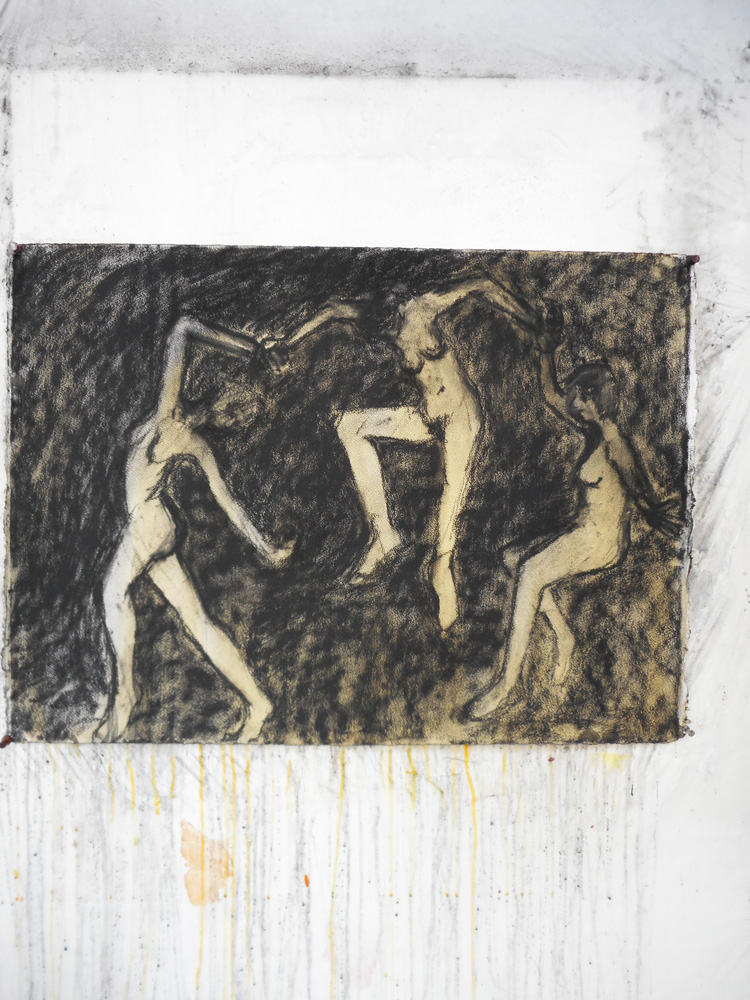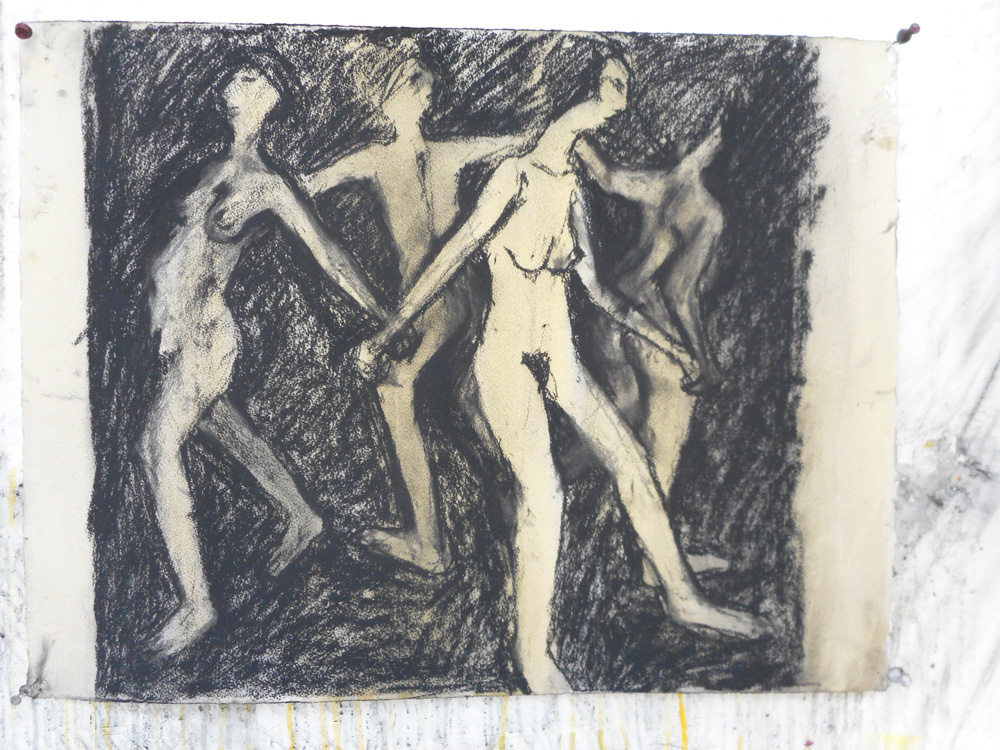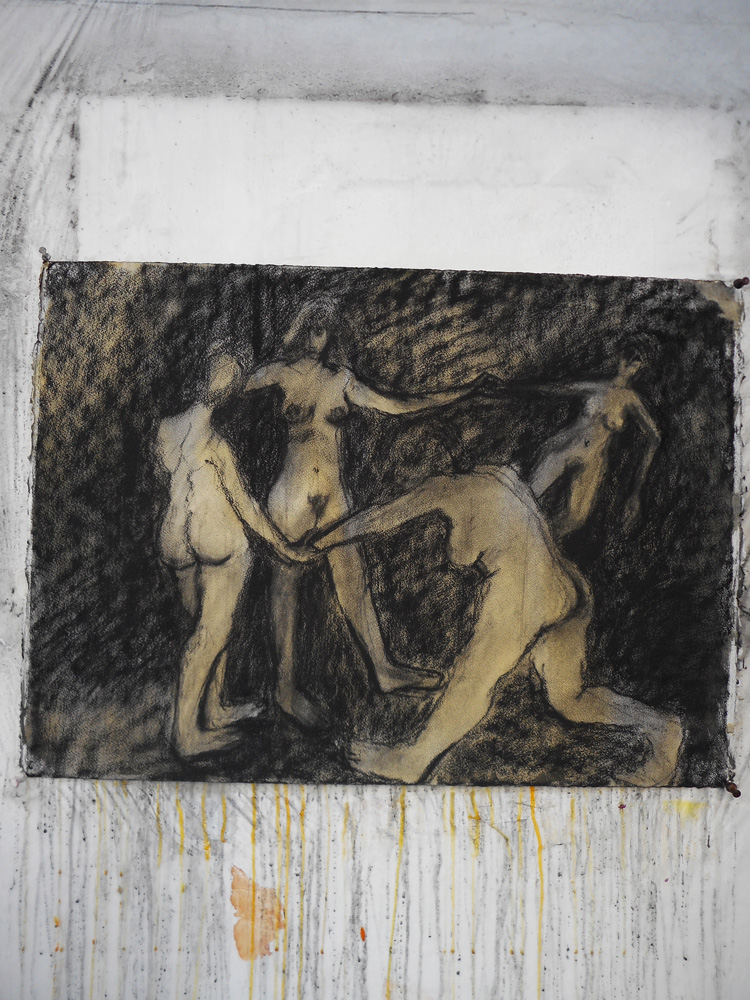I went to the Slade. Drawing when I was there was essentially linear, one made a mark representing a contour governed by the perceived edge of a form, most generally the nude. Every attempt was made to produce a drawing which was rigorous and lacking in arbitrary judgement. The result was a boundary line of extreme rigidity, all was contained within it, but there comes a time when one wishes to echo the essential spillage of the human condition.
This movement is more to do with thought than perception, though this may well be hung on known forms. If 'thinking is about tracing lines of flight and zigzagging patterns that undo dominant representations' (Badotti. 2011:2 ) It may also be about undoing 'the static authority of the past and redefining memory as a decoding faculty of residual traces of archives of leftover sensations' (Badotti.2011:2 ) These half-effaced presences require a way of drawing which allows forms to emerge rather than to be imposed on the surface. In thinking about drawing as a form of migrating memory I have been much aided by Rosi Badotti's Nomadic Theory.
In Badotti's writing she contrasts the 19th Century Flaneur on his leisurely city stroll, encountering the mysteries of the Arcade, with the high degree of speeding power central to the new forms of mobility which lead to the Information Highway. The velocity of change encountered within the conditions of multi-layered 21st Century technological experience seems to be much harder work than lifting the curtain on that exotic mixture of Orientalism and Occidentalism in the Arcade. The drawn line has been about for at least 40,000 years, therefore it may well be not a question of considering formal qualities but more of the experience it is registering and expressing.
Bibliography
Rosi Badotti (2011). Nomadic Theory: The Portable Rosi Badotti. New York & Chichester. Columbia University Press
The Dance Series of drawings
These dances stem from an interest in hierarchical figures, the elemental notions of dance dating back to Graeco-Roman figures here referenced in Poussin and Matisse. I also found much to evoke the breath of the dance in Jeremy Dale-Roberts Quintet, which looked toward Munch's 'Dancers on the Shore'.
The Dance Series: Carbon on Waterman.



